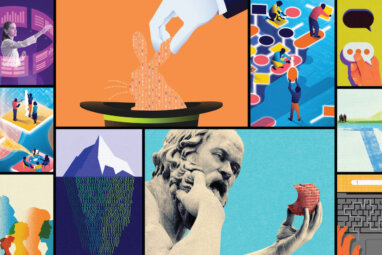Driving Growth in Digital Ecosystems
Developing the right capabilities for digital partnering is key to getting value from your ecosystem strategy.

Image Courtesy of Harry Campbell/theispot.com
High-growth companies don’t go it alone. Increasingly, they are achieving results by creating and orchestrating digitally connected ecosystems — coordinated networks of enterprises, devices, and customers — that create value for all of their participants.1
Companies whose dominant business model is ecosystem driver — in both B2B and B2C domains, such as energy management, home ownership, and financial services — experienced revenue growth approximately 27 percentage points higher than the average for their industries, and had profit margins 20 percentage points above the average for their industries, according to our research.2 That 2019 global survey of 1,311 executives also found that successful drivers achieve outsized results by attracting the partners needed to provide complementary — and competing — products and services that make their ecosystems seamless “one-stop shopping” destinations for customers.
Complementary offerings make it easier for customers to obtain comprehensive solutions to their problems. For example, when China’s largest insurer, Ping An, realized that its customers wanted not only insurance but also a means of addressing their medical and well-being needs, it created Good Doctor. The Good Doctor platform offers 24-7 one-stop health care services that are provided by pharmacies, hospitals, and about 10,000 doctors. In September 2019, Good Doctor reported serving more than 62 million customers monthly. Moreover, nearly 37% of Ping An customers used more than one of its services in 2019 — an important measure of ecosystem success.3
Successful ecosystem drivers also offer their customers greater choice, even when that entails featuring competing offers. In Australia, real estate platform driver Domain partners with about 35 mortgage lenders to offer homebuyers more loan choices.
References (18)
1. P. Weill and S.L. Woerner, “Thriving in an Increasingly Digital Ecosystem,” MIT Sloan Management Review 56, no. 4 (summer 2015): 27-34; and P. Weill and S. Woerner, “Surviving in an Increasingly Digital Ecosystem,” MIT Sloan Management Review, Nov. 17, 2017, https://sloanreview.mit.edu.
2. MIT CISR 2019 Top Management Team and Transformation Survey (N=1,311); “growth” refers to revenue growth compared to industry average.




